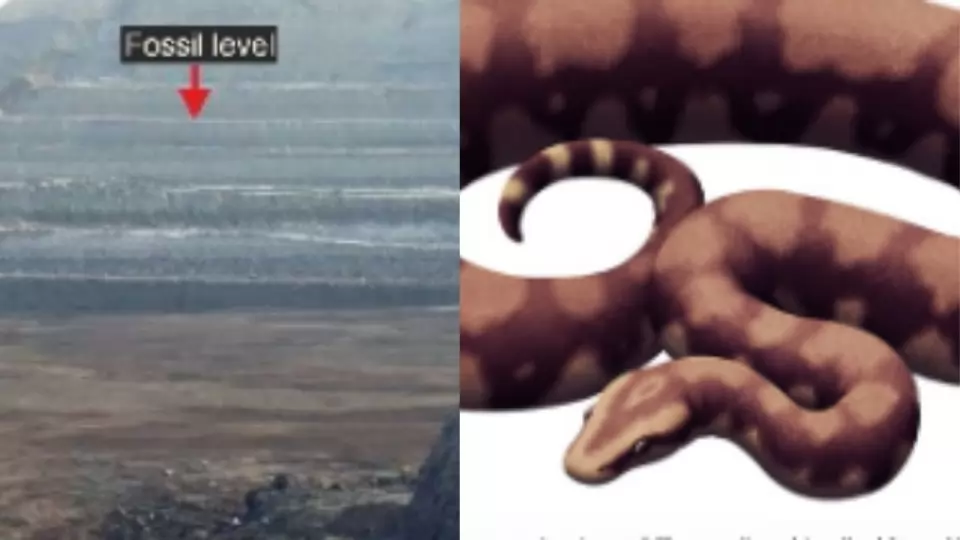
IIT Roorkee: One of the biggest snakes to have ever lived on Earth was shown to be represented by a fossil that was discovered in Gujarat's Kutch in 2005 and was previously thought to be that of a massive crocodile. Researchers at IIT Roorkee have discovered 'Vasuki Indicus,' which may prove to be a "jackpot" of knowledge about the evolutionary process, continental shift, and India's crucial role in the origin of numerous species, particularly reptiles.
IIT Roorkee's Prof. Sunil Bajpai & Debajit Datta discovered Vasuki Indicus, a 47-million-year-old snake species in Kutch, Gujarat. Estimated at 11-15 meters, this extinct snake sheds light on India's prehistoric biodiversity. Published in Scientific Reports. #SnakeDiscovery pic.twitter.com/ruLsfgPQCc
— IIT Roorkee (@iitroorkee) April 18, 2024
The head professor of the geological sciences department at IIT Roorkee, Sunil Bajpai, claims that this serpent, which measured between 11 and 15 meters (36 and 49.22 feet) in length, may have been longer than the now-extinct Titanoboa, which was formerly found in Colombia. The research indicates that Python and Titanoboa are the closest cousins of "Vasuki Indicus."
The enormous size of "Vasuki Indicus," which bears the name of the mythical king of serpents and is named after the country where it was discovered, according to researchers, would have made it a slow-moving, ambush predator similar to an anaconda. The largest known madtsoiid snake from the Eocene time of India supports the intercontinental dispersal of Gondwana, according to a study published in "Scientific Reports" on the "Springer Nature" platform.
According to Bajpai and IIT-Roorkee post-doctoral associate Debajit Datta, the fossil of this snake was found in the Panandhro Lignite Mine in Kutch and dates to the Middle Eocene period, or roughly 47 million years ago. The researchers found 27 perfectly preserved vertebrae that seem to be from a mature reptile during their investigation. Because of its length, it is the largest known Madtsoid snake. It lived during a warm geological period when average temperatures were estimated at 28°C.
The scientists claim that "Vasuki" represents a now-extinct relic lineage that originated in India based on a comparison of its relationships with other Indian and North African madtsoiids. This lineage crossed continents, moving from the subcontinent into North Africa via southern Eurasia as a result of the collision between India and Asia. "With this finding, we have demonstrated that we possess some of the most amazing snakes in India, in addition to other kinds," stated Bajpai. He and his colleagues had previously found the fossil of a plant-eating dinosaur in Jaisalmer last year, which was estimated to be 167 million years old.













Copyright © 2025 Top Indian News
